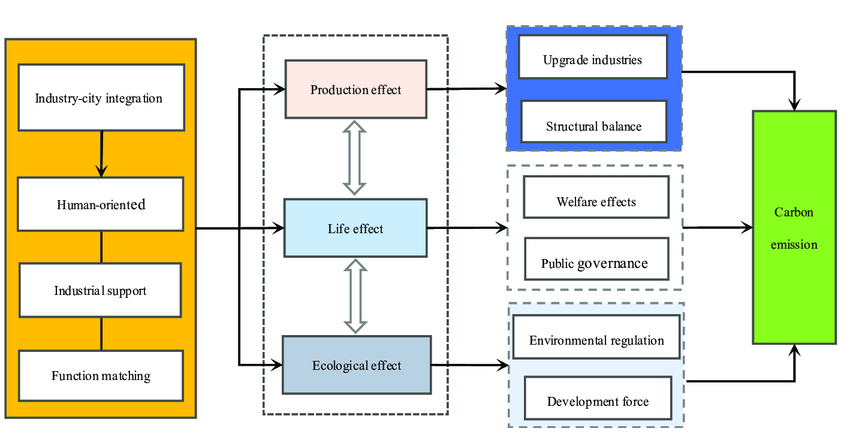Carbon, an unassuming element on the periodic table, plays a pivotal role in the intricate tapestry of life. Its unique chemical properties and versatile bonding capabilities make it integral to the existence of all known life forms on Earth. In this article, we will delve into the nature of carbon, its significance in various biological processes, and its role in shaping the world as we know it.
The Basics of Carbon
Carbon is the sixth element in the periodic table, and its atomic number is 6. With a relatively small atomic size and four valence electrons, carbon exhibits an exceptional ability to form diverse compounds. These compounds, known as organic compounds, serve as the building blocks for life. Carbon can form strong covalent bonds with a variety of other elements, including itself, giving rise to an extensive array of molecular structures.
The Carbon Cycle
One of the most fundamental processes involving carbon is the carbon cycle. This natural cycle regulates the movement of carbon between the Earth’s atmosphere, oceans, soil, and living organisms. The cycle consists of several interconnected processes, including photosynthesis, respiration, combustion, and decomposition.
Photosynthesis, performed by plants and some microorganisms, is a key process in the carbon cycle. During photosynthesis, carbon dioxide from the atmosphere is converted into organic compounds, such as glucose, with the help of sunlight and chlorophyll. This process not only sustains plant life but also releases oxygen into the atmosphere, contributing to the breathable air we depend on.
On the other hand, respiration, combustion, and decomposition release carbon dioxide back into the atmosphere. Animals, including humans, participate in respiration, converting organic compounds into energy and releasing carbon dioxide as a byproduct. Combustion, the burning of fossil fuels and organic matter, releases carbon dioxide into the air. Decomposition of organic material by bacteria and fungi also plays a crucial role in returning carbon to the soil.
Life’s Molecular Backbone
Carbon’s unique ability to form stable, strong covalent bonds allows it to serve as the molecular backbone for life. Organic molecules, such as proteins, nucleic acids, lipids, and carbohydrates, are all composed of carbon-based compounds. These molecules are essential for the structure and function of living organisms.
Proteins, for example, are composed of amino acids, and the carbon backbone of amino acids determines their three-dimensional structure and function. Nucleic acids, including DNA and RNA, consist of carbon-based sugar molecules linked by phosphate groups, forming the informational code of life. Carbohydrates, such as glucose, provide energy for cellular activities, and lipids form the basis of cell membranes.
The Diversity of Carbon Compounds
The versatility of carbon is evident in the vast diversity of organic compounds it can form. From simple hydrocarbons to complex polymers, carbon-based molecules exhibit an astonishing range of structures and functions.
Hydrocarbons, compounds consisting only of carbon and hydrogen, are the simplest form of organic compounds. They can exist as straight chains, branched chains, or rings, giving rise to various substances, including the fossil fuels that power our modern society.
Functional groups, such as hydroxyl, carbonyl, and amino groups, can be attached to carbon skeletons, further expanding the diversity of organic compounds. These functional groups contribute specific properties to molecules, influencing their solubility, reactivity, and biological activity.
Carbon in Technology and Industry
Beyond its significance in biology, carbon plays a crucial role in technology and industry. Carbon-based materials, including graphite, diamond, and carbon nanotubes, exhibit unique physical and chemical properties that make them essential in various applications.
Graphite, a form of carbon with a layered structure, is used in pencils and as a lubricant due to its slippery nature. Diamond, on the other hand, is one of the hardest known materials and is valued for its use in cutting tools and jewelry.
Carbon nanotubes, cylindrical structures composed of carbon atoms, have exceptional strength and electrical conductivity. These nanotubes find applications in nanotechnology, electronics, and materials science, holding promise for advancements in fields ranging from medicine to energy storage.
The Environmental Impact of Carbon
While carbon is crucial for life, the excessive release of carbon dioxide into the atmosphere, primarily from human activities such as burning fossil fuels, has led to environmental challenges. The enhanced greenhouse effect, driven by the accumulation of carbon dioxide and other greenhouse gases, contributes to global warming and climate change.
Efforts to mitigate the impact of excess carbon emissions include the development of sustainable energy sources, carbon capture and storage technologies, and reforestation initiatives. Understanding the carbon cycle and its influence on the environment is essential for addressing these challenges and ensuring the well-being of our planet.
Conclusion
Carbon‘s remarkable properties and its central role in the carbon cycle make it indispensable for life on Earth. From the molecular structures that form the basis of living organisms to the diverse array of carbon-based compounds with applications in technology and industry, carbon is truly the elemental backbone of our existence. As we navigate the challenges of the modern world, a balanced understanding of carbon’s significance is crucial for fostering sustainable practices and preserving the delicate equilibrium of our planet.



